Lung King Heen
It is a strange thing, that in Hong Kong, a city famed for its eating culture, and with something like 11,000 restaurants to choose from, there are only two restaurants to have been awarded the coveted three Michelin stars. For quite a while, there was only one, and this is it – Lung King Heen (literally: view of the dragon), at the Four Seasons hotel which is situated just above the International Finance Centre (IFC) shopping mall in Central district, Hong Kong. Chef Chan Yan Tak heads up this quite traditional Cantonese-cuisine restaurant which was the first, and still only cantonese restaurant to have three stars. Cantonese cuisine has long ranked very highly among the various types of Chinese food, and unsurprisingly (considering the geography of the region), Hong Kong food has been most influenced by the cantonese style.
I had eagerly awaited the Hong Kong (& Macau) Michelin guide for quite some time. When the Tokyo guide came out, it caused quite a stir and not surprisingly either, considering just how passionate the Japanese are about their food. Some of the very best Tokyo restaurants refused to be part of the guide, and a huge fuss was made over which restaurants were and weren’t included. After all that, I was hoping for some similar controversy when the guide visited Hong Kong, since it has always been my opinion that the writers of these guides often don’t understand Chinese food, or at least have a tendency to overrate it, and for the wrong reasons. The Age good food guide in Melbourne, for example has a tendency to overrate Chinese restaurants in Melbourne. This is not so surprising when you think of it, since there are different cultural values at play, and a Chinese chef, especially one in Hong Kong, isn’t going to go out of his way to cater for a western audience and the values which determine what constitutes good cuisine.
Nevertheless, humans are all remarkably similar from a biological point of view. While the variables in a highly complex society of what exactly differentiates a great dining experience from a good one, might be completely different from culture to culture, when it really comes down to it – when it comes down to the food, there shouldn’t be a huge difference. And who are we kidding here? Cuisines don’t exist independently from each other, and have been influencing each other in a globalised world for longer than most of us think (where do you think all those spices came from?).
Of course, to a certain extent, the experienced is westernised. Instead of food being brought out and placed in the middle of the table for all to share, it is brought out in a journey of courses (this trend was originated in the Russian imperial court, btw). This restaurant is famous for its seafood dishes, and it did not disappoint, my favourite course was actually the baked crab shell filled with fresh crab meat as well as onion and some other herbs and spices. It smelled so nice when they brought it out, that I was almost finished with mine when I realised I hadn’t taken a photo yet… oops. The other dishes were sound, and importantly none of them suffered from a need for the chef to be too impressive to the diner. Often at fancy restaurants such as these, all manner of exotic ingredients are added to the dishes to make them ‘better’ as it were. Not here – the dishes were very restrained, concentrating on a small handful of ingredients, and putting effort into getting the mix just right.
And it worked. Each dish was simple, and a feast for all the senses, and most of all – they tasted good. Even the abalone, a ‘prestige’ dish which I never understood the big deal over, was brilliant. Its preparation was simple, but effective, allowing the quality of the ingredients to not be overshadowed by an over-application of flavour flourishes, simply letting the diner enjoy the texture and the taste of this gastronomically delightful gastropod. Even the lobster fried rice, incredibly understated, looking like a bowl of regular fried rice, simply oozed with lobster essence as soon as one exposed one’s tastebuds to the flavourful cocktail.
As with all good journeys, it unfortunately had to come to an end, but this journey ended very strongly. I’ve always been a big fan of dessert, and in keeping with the tone of the rest of the meal, this one was simple but very effective. Double-boiled (whatever that means) bird’s nest soup, but that’s not all – it was served with almond cream, coconut milk, and syrup (sugar water). It was one of the most perfect combination of dessert flavours I have experienced with each ingredient adding a little bit of its own personality, and yet also enhancing the experience of the other ingredients. Birds nest soup as a delivery medium was ingenious, as not only did it give exactly the right kind of base flavouring and texture, but being another ‘prestige’ dish, was able to put a final stamp on the meal’s sense of occasion. (FYI these birds nests are actually made up of the saliva of certain species of swallow – i.e. the spit of a swallow – I thought that was very funny when I first realised, in fact I still do).
By the end of eight sumptuous courses, a regular human would probably feel close to full, but not bursting. I still felt slightly hungry, but generally satisfied, and the quality of service was really very good, as one would expect from a five star hotel. I’m not entirely sure I would say that this is the best Chinese food I have ever had. It’s not really a ‘thing’ to create a meal in this way – a journey of dishes and flavours for all the senses, but as an adaptation of Cantonese cuisine to a western paradigm, this is the best I’ve seen so far. I think with a bit of time and motivation (and the market for fine dining in Hong Kong is certainly up to it) more and more chefs are going to step up to the task of introducing the various types of Chinese food to this ‘system’ of high-end eating. For now, I will agree with the Michelin guide that Lung King Heen deserves its stars, but only just. It may not be the best Chinese food in the world, but it has succeeded admirably in the task of packaging it for western audiences without losing what makes it essentially Chinese – which is a very common mistake of Chinese restaurants in western cities, even good ones.

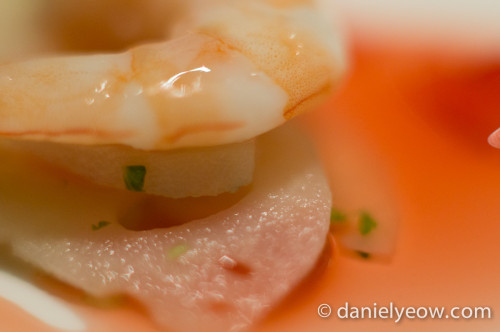
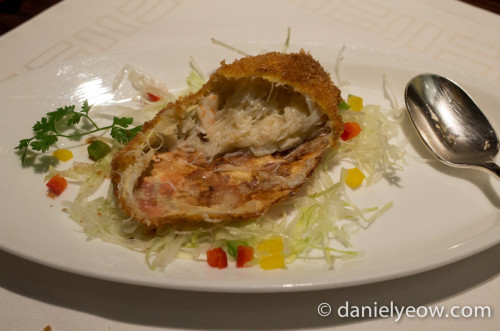
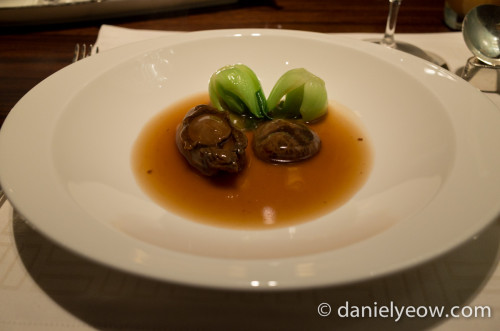
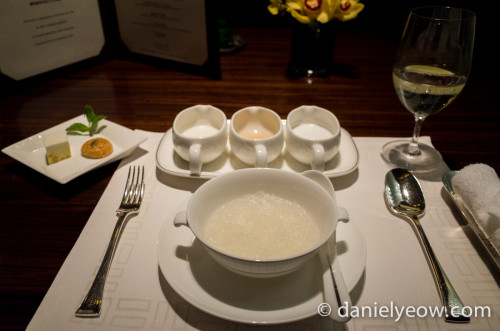
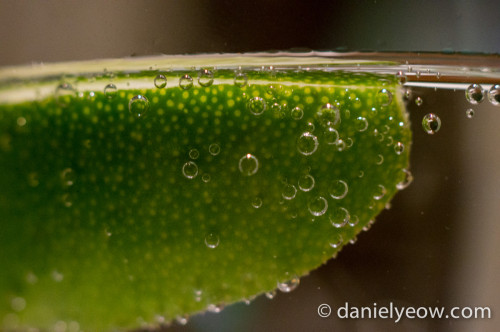
Which would your top three restaurants be for Cantonese cuisine? (wherever on the globe)
btw you might appreciate these links on sushi restaurants in Tokyo:
http://www.luxeat.com/blog/30-sushi-restaurants-tabelog-users/
http://www.luxeat.com/blog/beginners-guide-fine-sushi-dining/